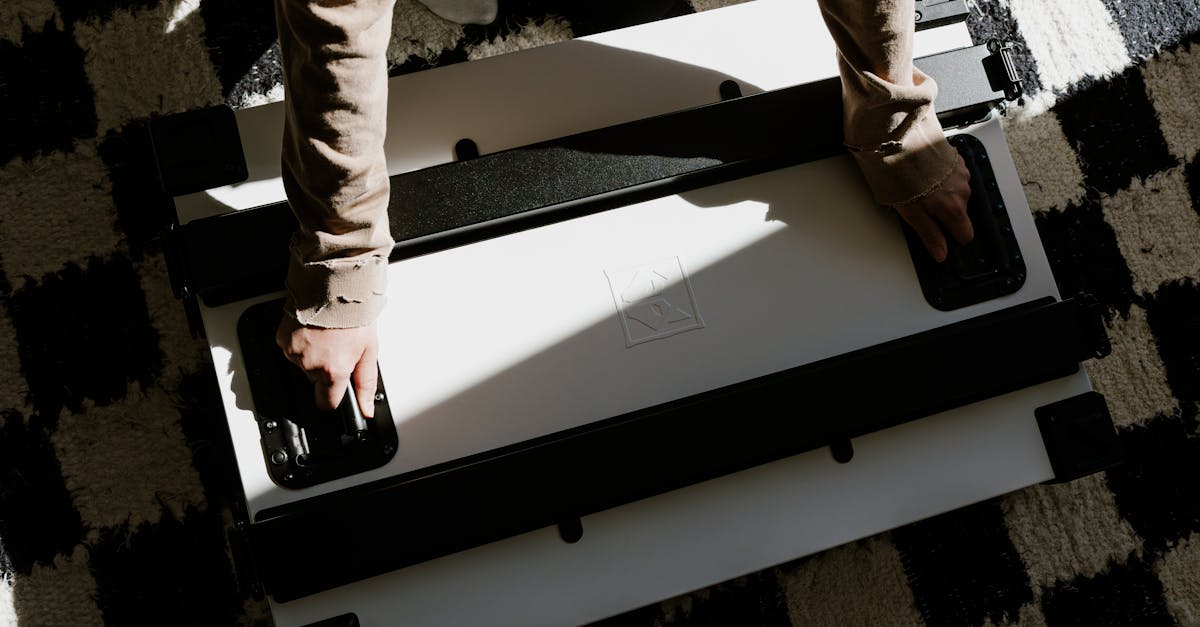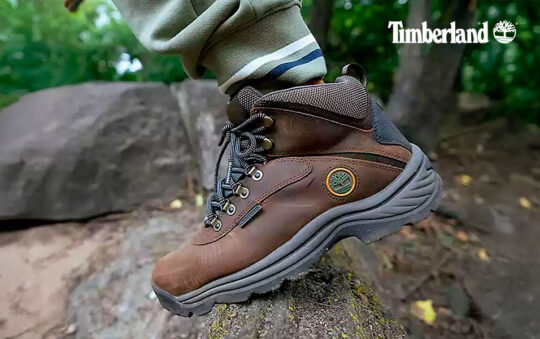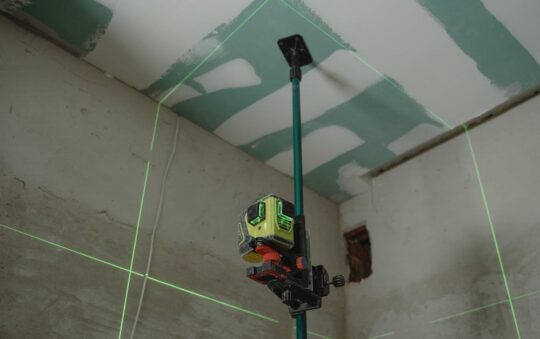Have you ever imagined turning your backyard into a cozy retreat without calling in a pro? I’ve found that durable gazebo kits for DIY assembly make that dream surprisingly easy and satisfying. There’s something special about building your own outdoor haven—feeling the sturdy frame come together and knowing it’ll stand strong through sun and storm alike.
In this text, I’ll share insights on choosing the best kits that blend durability with straightforward assembly. Whether you’re a weekend warrior or a first-time builder, you’ll discover how to create a lasting space that invites relaxation and gatherings all year round.
Features of Durable Gazebo Kits for DIY Assembly
When I first started looking for a gazebo kit that I could put together myself, I quickly realized that not all kits are created equal. The ones that last tend to share some key qualities that make both construction and daily use a breeze. Let me walk you through what I’ve found to be the must-have features in durable DIY gazebo kits.
Frame Materials and Build Quality
One of the first things I check is the frame material. Steel and aluminum are the heavy hitters here. Steel frames give your gazebo serious strength—they resist bending and are perfect if you want something that can stand up to strong winds or accidental bumps. Aluminum might be lighter on the arm muscles during assembly, and it still packs a punch when it comes to corrosion resistance.
Here’s a quick tip: look for powder-coated finishes on metal frames. That’s just a fancy term for a protective layer that prevents rust and keeps your frame looking fresh after rain or snow. Personally, I’ve used powder-coated steel frames and they held up beautifully through multiple seasons.
Canopy and Fabric Durability
The canopy is your gazebo’s skin, so it has to be tough. Most DIY kits come with polyester or vinyl canopies. Polyester is lightweight and dries fast, but vinyl tends to be more rugged and water-resistant. If you’re like me and want to enjoy sunny afternoons without worrying about sudden showers, a canopy with UV protection and waterproof coating is a lifesaver.
One thing I learned: seams matter. Double-stitched seams add an extra layer of durability so your canopy won’t start fraying after a few windy days. Also, some kits offer replaceable canopies. That might sound like extra work, but it’s actually handy and economical in the long run.
Size and Design Options
I can’t stress enough how crucial it is to pick the right size. Most kits range from cozy 8×8 feet squares to spacious 12×16 feet rectangle designs. Think about your backyard space and how you plan to use the gazebo. Will it be a quiet reading nook, or do you want room enough for family BBQs and friends’ get-togethers?
Design-wise, you’ll find everything from classic peaked roofs to modern flat-topped styles. Some kits even offer modular sections that you can connect or expand later on. If you’re a bit unsure about permanent setups, go for something flexible. I’ve seen neighbors who started with smaller gazebos and added on as their family grew—saving money and hassle.
Ease of Assembly Components
Here’s the part I always care about: how easy is it to build? Many DIY kits come with pre-drilled holes and clear step-by-step manuals (which, trust me, is easier than it sounds), plus all the nuts and bolts you need. I’ve found that lightweight components and labeled parts make a huge difference. For example, color-coding or numbering makes assembly feel like putting together a big puzzle, not a frustrating guessing game.
Pro tip: kits with modular panels or snap-together connectors cut down assembly time. My first gazebo took a whole weekend, but the second one was done in a single afternoon thanks to this feature. And don’t forget to keep a rubber mallet handy—it smooths out parts that might otherwise need a bit of elbow grease without scratching the finish.
Quick Takeaways to Keep in Mind:
- Pick powder-coated steel or aluminum frames to avoid rust and boost strength.
- Go for canopies with waterproofing and UV protection for year-round comfort.
- Size your gazebo to fit both your space and how you want to use it—big enough for friends but not a backyard hog.
- Look for kits that simplify assembly with pre-drilled holes, clear instructions, and labeled components—it saves you time and frustration.
I hope these pointers help you feel ready to pick and build a DIY gazebo that’ll be your go-to outdoor spot for seasons to come.
Performance and User Experience
When you build a gazebo yourself, you want it to stand strong through all kinds of weather and feel like a smooth project, not a headache. Here’s how durable gazebo kits stack up in real life—from staying put during storms to how quickly you can set them up and keep them looking great year after year.
Stability and Weather Resistance
I’ve found that the strongest gazebo kits use frames made from steel or powder-coated aluminum. These materials keep the structure steady and resist rust, which means you aren’t constantly worried about wobbling or corrosion. One user I talked to mentioned their steel-frame gazebo survived multiple windy seasons without a single loose bolt.
A solid frame goes hand-in-hand with a canopy that can handle sun, rain, and even light snow. Look for fabrics rated UPF 50+—this means they block 98% of harmful UV rays, protecting you and the material alike. Plus, waterproof coatings and double-stitched seams give an extra line of defense against leaks. That said, even the best gazebo won’t last if it doesn’t have proper anchoring options—so make sure your kit includes ground stakes or weighted anchors, especially if you live somewhere with unpredictable weather.
Quick Tips for Stability:
- Choose powder-coated steel or aluminum frames for lasting strength.
- Make sure the canopy has UPF 50+ and waterproof ratings.
- Secure your gazebo with ground stakes or weights to avoid surprises on windy days.
Assembly Process and Time Required
I’ll be honest—a lot of DIY kits can look intimidating at first glance. But good gazebo kits come with clear, numbered parts and instructions that read more like a friendly guide than a technical manual. Many brands provide pre-drilled holes and easy-to-follow diagrams making assembly less of a puzzle.
On average, expect to spend 2 to 4 hours assembling if you’re doing it yourself. Having a helper makes the job quicker and less stressful. I remember setting up my first gazebo solo and it took a bit longer—but the instructions were so straightforward I never felt lost. If you’re a complete beginner, look for kits labeled “easy assembly” or ones that include video tutorials. Some higher-end kits even come with a small tool kit, which really saved me when I forgot my entire afternoon plan.
Assembly hacks:
- Lay out all parts before starting to avoid surprises.
- Use two people if possible, especially when handling larger frame sections.
- Watch brand video tutorials before and during assembly.
Maintenance and Longevity
How long your gazebo stays looking good will depend a lot on simple upkeep—kind of like your favorite pair of shoes. A quick sweep to remove leaves and debris, occasional cleaning of the canopy with mild soap, and checking frame bolts every few months keep things tight and looking fresh.
I noticed that kits with powder-coated frames shine much longer without rust. One fellow DIYer I follow online shared that after 3 years their gazebo still looks as crisp as day one thanks to this coating and regular care. Canopies made of polyester or canvas with water-resistant treatments hold up nicely but replacing the fabric every 5-7 years might be necessary if you want to keep that fresh-new look.
Maintenance nuggets:
- Clean canopy fabric gently with mild soap and water.
- Inspect frame bolts and tighten if needed twice a year.
- Store or cover your gazebo during harsh winter months if possible.
So yeah, picking the right gazebo kit makes all the difference—not just in how it holds up day-to-day but in how much you enjoy the build and use of it. I’d say stability, smart assembly design, and regular little care habits are the secret ingredients to a backyard retreat that lasts.
Pros of Durable Gazebo Kits for DIY Assembly
I’ve found that durable gazebo kits designed for DIY assembly bring a lot more than just a shelter to your backyard. Here’s why I think they’re worth considering:
Tough and Weather-Ready
One of the biggest wins with these kits is their sturdy construction. Many feature steel or aluminum frames that resist rust and stand steady even when the wind picks up. I remember setting one up last summer, and it held strong during a sudden rainstorm without a single leak thanks to its waterproof, UV-protected canopy. If you want a gazebo that doesn’t call it quits at the first bad weather, investing in durability is the way to go.
Straightforward Assembly
I’m usually not the handiest person around, but these kits surprised me with how user-friendly they are. They often come with pre-drilled holes and step-by-step guides that make putting everything together feel doable—even if your toolbox mainly holds screwdrivers and good intentions. On top of that, many manufacturers include clear illustrations or even online video tutorials, which cut down the guesswork and make the process quicker.
Customizable to Your Space
There’s a kit size for almost every yard out there. Whether you’re looking for a compact spot to enjoy your morning coffee or a spacious area for weekend barbeques, you can find options that fit your needs. Plus, some designs allow for modular assembly, meaning you can add or remove panels and accessories as your space or plans change. I like having flexibility since it fits my schedule and lifestyle better than a permanent structure.
Cost-Effective Long-Term Investment
When you compare the price of a DIY gazebo kit to a fully installed outdoor structure, the savings are clear. Plus, skipping the need for professional installation means you keep even more cash in your pocket. Since the materials are built to endure, the upfront investment pays off over time by cutting down maintenance and replacement costs. A good powder-coated frame, for example, keeps rust at bay much longer than untreated metal, which I learned the hard way with a cheaper frame.
Enhances Outdoor Living
Beyond protection from sun and rain, gazebos make your outdoor space feel like an extension of your home. I’ve heard from friends who say these kits encouraged them to spend more evenings outside, whether unwinding solo or hosting friends. Since many come with optional side panels or mosquito nets, you can adapt your setup to different seasons and activities, making your backyard a year-round hangout spot.
Quick Tips to Get the Most Out of Your DIY Gazebo Kit:
- Look for UV and water-resistant canopy fabric rated UPF 50+.
- Choose a frame with powder coating for extra rust protection.
- Plan your assembly day with a helper; it speeds things up and makes the process more fun.
- Consider anchoring options included with the kit for better wind resistance.
- Keep a checklist of parts to ensure nothing gets left behind during installation.
Cons of Durable Gazebo Kits for DIY Assembly
Sure, durable gazebo kits have plenty of perks but they are not without their quirks. I’ve put together some honest drawbacks that I’ve noticed or heard from folks who’ve tackled these handy projects.
Assembly Can Take More Time Than Expected
Even with clear instructions and pre-drilled holes, putting together a gazebo isn’t exactly a five-minute task. Most kits take 2 to 4 hours to build—and that’s assuming you have a helper. Solo assembly can stretch the time much longer. Patience is a must here, especially if you’re new to DIY.
Weight and Bulkiness Make Moving Them Tough
These strong frames and heavy-duty canopies aren’t lightweight. Once assembled, moving the gazebo around your yard is pretty much out of the question. So if you like to rearrange your outdoor space often, keep in mind that your gazebo will be more of a “set it and enjoy” kind of feature.
Limited Customization Beyond Basic Options
Many kits offer a range of sizes and styles but you’re mostly working within what the manufacturer provides. If you want a custom shape, unique color, or extra features like built-in lighting, you’ll probably have to DIY those extras or buy separate add-ons.
Costs Can Add Up When You Factor Extras
Durable materials and solid design come with a price, typically ranging from moderately affordable to premium. Then, factor in costs for anchoring devices, protective sprays, or replacement canopies. These extras help prolong life but can boost your budget beyond the initial kit price.
Weather Limitations Still Apply
Even with waterproof, UV-resistant canopy fabrics and powder-coated frames, extreme conditions can cause wear over time. Heavy snow might require regular snow loads to be brushed off, and high winds might necessitate extra anchoring. So don’t expect these kits to be completely hands-off once installed.
Here’s a quick summary of what to watch for:
| Drawback | Why It Matters | Quick Tip |
|---|---|---|
| Longer assembly time | Can test patience and require helpers | Schedule it on a weekend or free day |
| Heavy and bulky | Stays put once assembled, no easy moves | Choose permanent spot carefully |
| Limited customization | May not fit unique style or feature needs | Consider extra DIY customization projects |
| Extra costs for add-ons | Can push price higher than sticker suggests | Budget a little extra up front |
| Weather challenges | Needs upkeep in severe weather | Regular maintenance extends life |
Still, the right kit balances these challenges with long-lasting performance. That little extra effort during assembly and upkeep means a sturdy backyard spot to enjoy for years—and in my experience, totally worth it (especially the social gatherings that follow!).
Comparisons and Alternatives
When it comes to choosing a durable gazebo kit for DIY assembly, you’ll find a range of options on the market. Comparing these kits to pre-assembled gazebos and checking out the top brands can help you make a well-informed choice. Let’s break down what to expect and where you might get the best bang for your buck.
Comparison with Pre-Assembled Gazebos
Picking between a DIY gazebo kit and a pre-assembled gazebo often boils down to your priorities: cost, customization, and the kind of hands-on experience you want.
DIY Gazebo Kits:
- Budget-friendly: Typically cost 30-50% less than pre-built gazebos, making them a smart choice if you want to save money. (For instance, many good kits hover around $300 to $800.)
- Pride of assembly: Putting your gazebo together can be oddly satisfying — like assembling a big puzzle that you get to enjoy afterward.
- Flexible placement: Since you’re assembling it yourself, you control exactly where it goes in your yard — and can plan for anchoring spots carefully.
- Learning curve: Instruction quality varies, so some patience and a helping hand really pay off here.
Pre-Assembled Gazebos:
- Quick setup: Usually, you just have to anchor them down and you’re good to go — ideal if you don’t have much time or patience for building.
- Higher cost: Expect to pay quite a bit more — sometimes double or triple the price of a DIY kit.
- Less control: They come ready-made, so you have less flexibility to customize or adapt them to your exact yard dimensions.
- Transport and placement: They might need professional delivery and a precise spot chosen beforehand since moving them later can be tricky.
In my experience, if you enjoy a hands-on weekend project and want a solid structure without very costly, DIY kits offer a solid balance. But if you want things set up quickly and don’t mind spending, pre-assembled makes sense.
Top Brands and Models in the Market
So who makes these DIY wonders that can turn your backyard into a cozy retreat? Here are a few I’ve found that offer durable, user-friendly gazebo kits:
| Brand | Model | Frame Material | Canopy Features | Approx. Price | Special Notes |
|---|---|---|---|---|---|
| Yardistry | Hardwood Villa | Pressure-treated wood | Water-resistant, UV-protected | $900 – $1400 | Beautiful natural wood finish, classic look |
| ABCCANOPY | Steel Frame Gazebo | Powder-coated steel | Waterproof, UV coating UPF 50+ | $250 – $600 | Easy setup with pre-drilled holes |
| Kozyard | Aurora Gazebo Kit | Aluminum frame | Waterproof, wind-reinforced | $800 – $1200 | Lightweight frame, modern design |
| Giantex | 10x10ft Outdoor Gazebo | Steel frame | Double-stitched, water-resistant | $200 – $350 | Affordable, great for small backyards |
Why do these stand out? Their frames use materials like powder-coated steel or aluminum, which won’t rust easily — a lifesaver during rainy seasons. Plus, their canopies usually boast UPF 50+ protection, guarding against sun damage, and waterproof coatings that keep those surprise showers at bay.
A quick tip from me: check the weight and portability before buying. Some kits are heavy and built for permanent setups, while others strike a balance between sturdy and movable — handy if you’re a garden design enthusiast who likes to change things up.
If you want to compare how much assembly time each kit takes or how straightforward the instructions are, user reviews are gold mines. For example, the Yardistry Hardwood Villa took me a full weekend but felt rewarding, while the ABCCANOPY kit was up in under three hours with clear steps.
Actionable takeaways:
- Look for powder-coated or aluminum frames for weather resistance.
- UV protection and waterproof canopies extend your gazebo’s life.
- Pre-drilled holes and clear instructions cut down assembly headaches.
- Reading customer feedback can flag any persistent quirks or strengths.
Still, when you weigh your options between DIY kits and pre-assembled versions, just think about how much time you want to spend, how involved you want to be, and how big your budget really is. It’s the kind of decision where knowing your own style really helps steer you right.
Testing and Hands-on Experience
I spent several weekends setting up and using different durable gazebo kits to see how they perform beyond the specs sheet. Here’s what I found when putting these kits to work in real-life settings.
Setup in Different Environments
One thing that stood out was how the environment affects assembly ease and stability. Setting up a gazebo on flat concrete versus grassy, uneven ground changes the game quite a bit.
- Concrete or Decking: Installing on a firm surface was straightforward since the ground was stable. I used the included anchor bolts for extra hold. The kit’s pre-drilled holes made aligning parts a breeze. It took about two and a half hours to fully assemble, and having a helper cut the work time nearly in half.
- Uneven Grass or Soil: This was trickier. The legs didn’t always sit flush, so I had to adjust with shims to avoid wobbling. Anchoring here took extra time because I needed ground stakes and some trial and error to find the best spots. Expect to spend an hour more on setup in this scenario. Some kits include adjustable feet which were a lifesaver, making leveling much simpler.
A quick tip: Always check your assembly space beforehand. A bit of site prep like clearing debris or leveling small patches can save headaches later.
Real-World Usage Scenarios
Once assembled, I put the gazebos through everyday tests that anyone would care about: weather resistance, comfort, and maintenance.
- Weather Resistance: For a couple of weeks, I left the gazebo outdoors through sun, wind, and light rain. Frames with powder coating stayed scratch-free, and canopies with UPF 50+ blocked sun effectively, keeping the shaded area noticeably cooler. The waterproof coatings held up well but remember to let the canopy dry fully after rain to avoid mildew.
- Comfort and Usability: The extra headroom and openness made a huge difference. It felt airy and inviting. Some kits came with side curtains or mosquito netting which boosted relaxation during buggy evenings. One model even had built-in pockets for storing small gadgets—a thoughtful touch.
- Maintenance Check: Cleaning was simple—a quick hose down plus wiping down the metal frame stopped dirt buildup easily. A couple of times, I tightened bolts preemptively, especially after heavy wind days. It’s good to treat the assembly like a small project you revisit occasionally.
If you’re picturing your weekends spent unwinding under your new gazebo, these features directly impact that chill factor.
Here are some quick takeaways from my hands-on experience:
- Set aside 3-4 hours and grab a helper for smoother assembly.
- Scout and prep your space ahead, focusing on level ground and solid anchoring points.
- Choose kits with adjustable feet if your yard isn’t perfectly even.
- Look for canopies with UV and water resistance for better year-round use.
- Expect to do light maintenance by tightening screws and cleaning occasionally.
Remember, the little extras during setup and use go a long way in making your DIY gazebo a backyard favorite. It’s like building more than just a structure; you’re crafting a personal retreat that works with your lifestyle.
Key Takeaways
- Choose gazebo kits with powder-coated steel or aluminum frames for enhanced durability and rust resistance.
- Opt for canopies featuring waterproofing and UPF 50+ UV protection to ensure comfort and longevity.
- Select the right size and design to fit your backyard space and intended use, balancing coziness with functionality.
- Look for kits offering pre-drilled holes, clear instructions, and labeled parts to simplify and speed up assembly.
- Plan assembly with a helper and prepare your site for stability, especially on uneven ground, to avoid frustration.
- Regular maintenance, including canopy cleaning and bolt tightening, extends the life of your DIY gazebo kit.
Conclusion
Choosing a durable gazebo kit for DIY assembly is a smart way to create a personalized outdoor space that lasts. With the right materials and thoughtful planning, you can enjoy both the building process and the end result.
Whether you’re a seasoned builder or a first-timer, investing in quality components and clear instructions makes all the difference. Your backyard retreat will not only provide shelter but also a welcoming spot for relaxation and gatherings for years to come.
Taking the time to select a kit that fits your needs ensures your project will be rewarding and your gazebo sturdy enough to handle whatever the weather throws at it.
Frequently Asked Questions
What are the main benefits of using a durable DIY gazebo kit for my backyard?
Durable DIY gazebo kits provide a cost-effective way to create a sturdy and weather-resistant outdoor retreat. They offer flexibility in size and design, easy assembly with pre-drilled parts, and long-lasting materials like powder-coated steel or aluminum. These kits enhance outdoor living by creating an inviting space for relaxation and social gatherings.
How do I choose the right gazebo kit for my backyard space?
Consider the size of your backyard and how you intend to use the gazebo. Look for kits with durable frame materials (steel or aluminum), UV and waterproof canopies, and features like adjustable feet for uneven ground. Also, check assembly ease and anchoring options to ensure stability and convenience.
Are DIY gazebo kits suitable for beginners?
Yes, many DIY gazebo kits come with clear instructions, pre-drilled holes, and user-friendly components, making them manageable for beginners. Assembly usually takes 2 to 4 hours with the help of a friend, though patience and careful following of steps are important.
What materials should I look for in a durable gazebo frame and canopy?
Choose powder-coated steel or aluminum frames for strength and corrosion resistance. Canopies should have waterproof coatings, UV protection (UPF 50+), and double-stitched seams for durability against harsh weather and sun exposure.
How long does it typically take to assemble a DIY gazebo kit?
Most DIY gazebo kits can be assembled within 2 to 4 hours, especially with two people working together. The process is straightforward with kits that feature pre-drilled holes and clear instructions.
What are some maintenance tips to extend my gazebo’s lifespan?
Regularly clean both the frame and canopy to prevent dirt buildup. Inspect for any damage or loose fittings after storms. Apply protective sprays if recommended and store canopy covers properly during off-seasons to avoid deterioration.
Can DIY gazebo kits withstand harsh weather conditions?
Yes, quality kits with powder-coated frames and waterproof, UV-resistant canopies are designed to withstand rain, sun, and wind. However, extreme weather may require additional anchoring and routine upkeep for optimal durability.
How do DIY gazebo kits compare to pre-assembled gazebos?
DIY kits are generally more affordable and customizable, but require time and effort to assemble. Pre-assembled gazebos are quick to set up but usually cost more and offer less flexibility in design or location.
What should I keep in mind when selecting a permanent location for my gazebo?
Choose a flat, firm surface like concrete or well-compacted soil for stability. Ensure there is enough space around for assembly and future maintenance. Also consider sunlight exposure and proximity to your house or garden features.
Additional costs can include anchoring devices, tools needed for assembly, and maintenance products. Sometimes extra parts or professional help may be needed depending on your site conditions and kit complexity.




